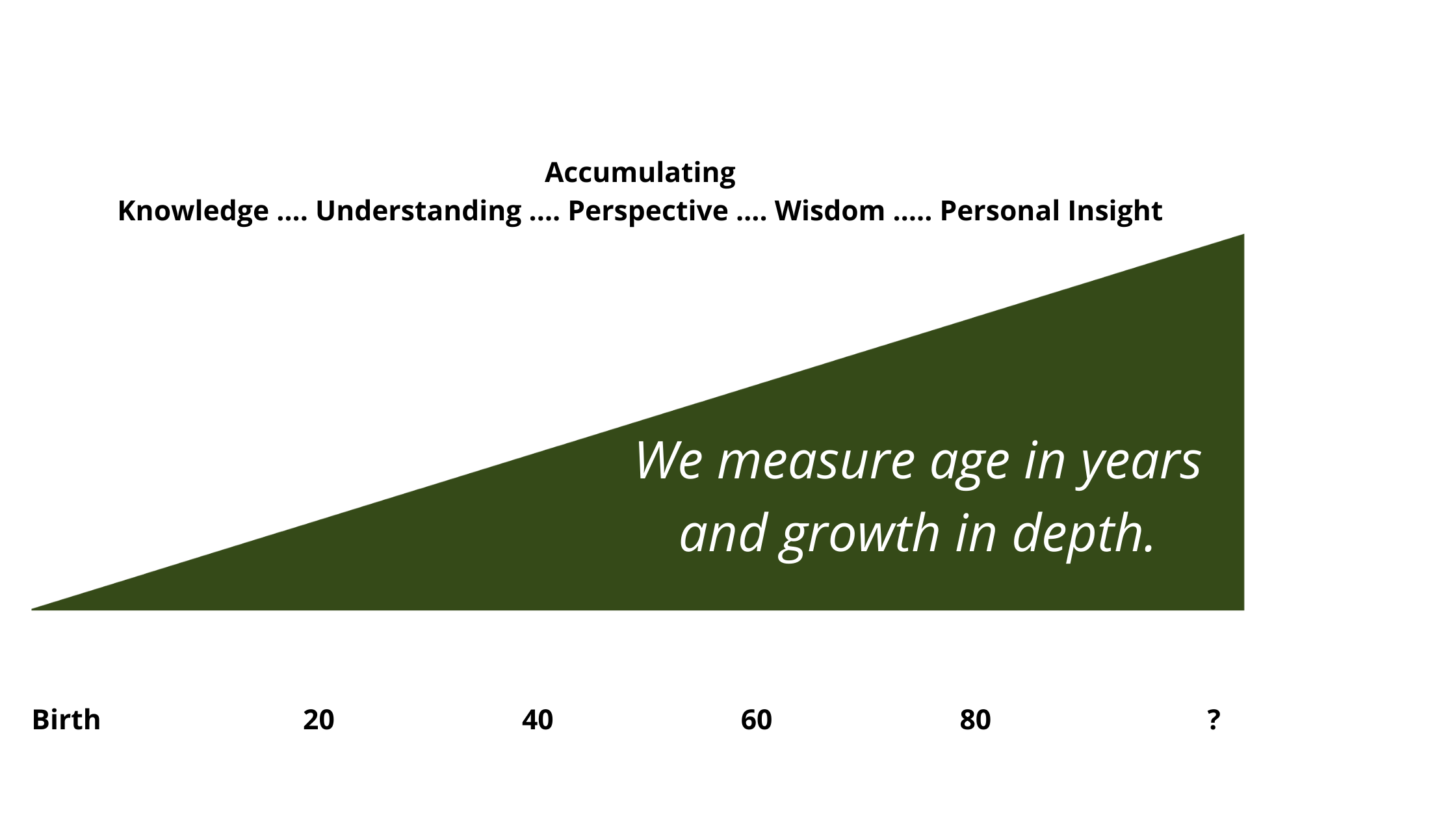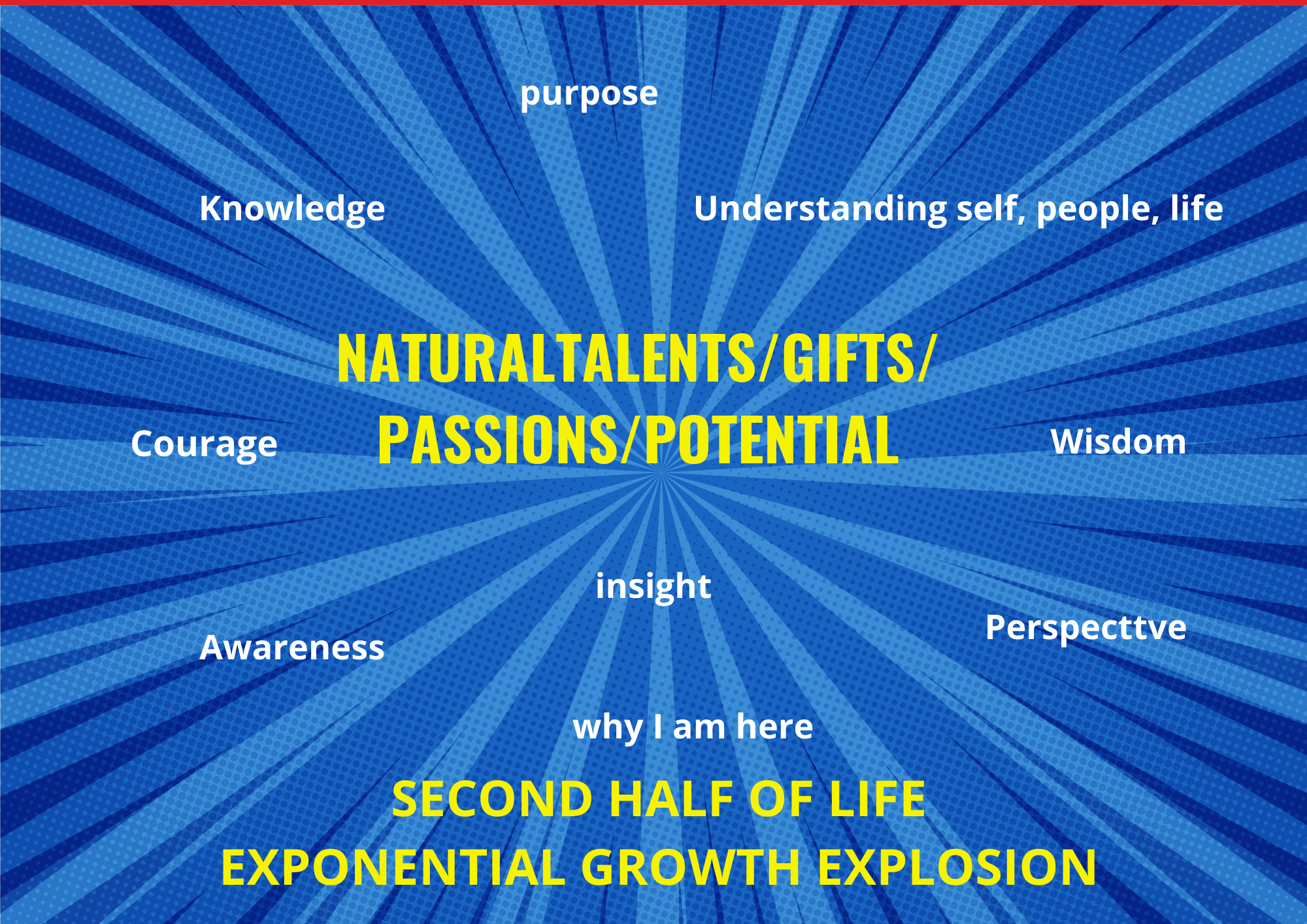The Issue
This paper aims to show the typical realities of 21st century exponential personal growth and development in the second half of life. It’s not until then that we really begin to understand why we are here and what we each uniquely have to offer to the world. With our life statistical expectancy now going beyond age 80 , mid-life is in our 40’s.
“Traditionally the United Nations and most researchers have used measures and indicators of population ageing that are mostly or entirely based on people’s chronological age, defining older persons as those 60 or 65 years or over. However there has been an increasing recognition that the mortality risks, health status, type and level of activity, productivity and other socio-economic characteristics have changed significantly in many parts of the world over the last century and particularly in the last few decades. This has led to the development of alternative concepts and measures to offer a more nuanced perspective of what population ageing means in different contexts.”[1]
The Traditional View of the Human Lifecycle
Figure 1 is a simple illustration of the traditional view of the human lifecycle. It reflects a perception that we mature until some point in the middle of our lives and then go into a state of steady decline until we die.
Fig 1:

Continuous Development for Life in the 21st Century
In our early adult years we make major life-establishment decisions based on our limited life experience and the influences of older people such as parents and teachers. These can relate to basic life issues such as paid work, marriage, children, education, a home and a mortgage.
By 30, we have had enough experience of life to often wonder if our original choices were the right ones. By 40 we are beginning to feel like we are making some sense out of :
- our respective unique abilities, and
- whether we can do something that makes us feel we are of value to the world and not just going through the motions of a life journey.
By the time we reach the mid-40’s to mid 50’s, many of us have what we often call a midlife crisis. While it is indeed statistically the middle of life, the ‘crisis’ aspect relates more to the perceived prospect of our lives beginning to start the downhill slide. Put bluntly, we still perceive life is almost over when in fact it is only half over.
Mid-Liife Awakening
In reality the mid-life crisis is in fact a mid-life awakening. We are starting to realize what we are good, what people value about us and what makes us different to anyone else. We realize we have many years ahead of us in which to discover and apply our natural potential.
Much of my work as a mentor over the past 18 years has been helping people make the emotional transition from fulltime work to whatever next life adventure they want to create. Most of my clients – and others who were potential clients – did not want to “retire” in its traditional perception. We want to continue developing ourselves for as long as we stay healthy.
The Japanese people don't have a word for retirement. They believe instead in the concept or philosophy of IKIGAI which means 'reason for being" or the value of one's whole life. Certainly in this era of rapidly-expanding longevity, we are increasingly realizing the value and potential of living well beyond age 65.
Here’s How I See the Reality of 21st century “second-life living”
I see our growth in this way, “we measure age in years, we measure growth in depth – depth of understanding self (especially self!) and people generally, perspective, insight, experience, knowledge and wisdom”. It would look something like as shown here in Fig 2
Fig. 2

However this linear perception does not do justice to the complexity and exponential nature of our second-life growth.
Exponential Growth and Development
 Typically, from mid-40’s much of our establishment needs have been fulfilled, or at least are no longer our top priority. Our ‘awareness” of deeper matters about life and the true depth of our potential begins to kick in. From there the exponential growth phase in our lives takes off.
Typically, from mid-40’s much of our establishment needs have been fulfilled, or at least are no longer our top priority. Our ‘awareness” of deeper matters about life and the true depth of our potential begins to kick in. From there the exponential growth phase in our lives takes off.
Exponential growth develops in multi-dimensional ways, including expanded perspectives, knowledge, experience, understanding of people and life, insight, awareness and wisdom.
The process is cumulative, compounding, even chaotic, rather than linear. This accumulation continues for as long as we remain healthy and want to search and explore life and our limitless potential.
“A huge part of the change in outlook in terms of aging and retirement is based on new understandings of the brain and neuroplasticity - that we can indeed continue to change through choice - and that this is what keeps our brain and mind healthy. Overcoming limiting beliefs about what is possible and having a growth mindset is key! A sense of curiosity to keep exploring and opening up to new experiences. Attitude is everything but it also takes focus, effort and an intrinsic motivation.... which not everyone has”. Gwen Meyer[2]
As chaotic or uncertain as the process may be, the one certainty is that it will be based on enjoying using and maximizing the natural gifts and passions unique to each of us. Such a foundation opens the way to a path of life we may not have planned, but opens our minds to why we are here.
Conclusion
The world of the 21st century desperately needs to tap into the accumulated potential of this “explosion” of multi-dimensional human growth and development that naturally occurs in the second half of our lives.
This reality is vital for two reasons of global importance:
- We live in a world where people age 60 and over will soon outnumber children aged five and under. In 2030 the first millennials will start turning 50, and the first gen-Xers will turn 65. At the end of 2030, the first boomers will begin turning 85. There is a great need to see the potential in this rather than as a problem.[3]
- To end the scourge of ageism and particularly the current employment problems that are based solely on a person’s age.
[1] “World Population Prospects 2019” (United Nations, 2019)
[2] Gwen Meyer, Incremental Steps Pty Ltd Adelaide
[3] An ageing workforce isn't a burden. It's an opportunity | World Economic Forum (weforum.org)
Listen to my podcast on Spotify: "Why the Second Half of Life is the Richer:" https://open.spotify.com/episode/7iUAvpfnHR30hZsEetEZww
Click here for details of my new (2024) "How to Enjoy Your Second Half of Life" Program





